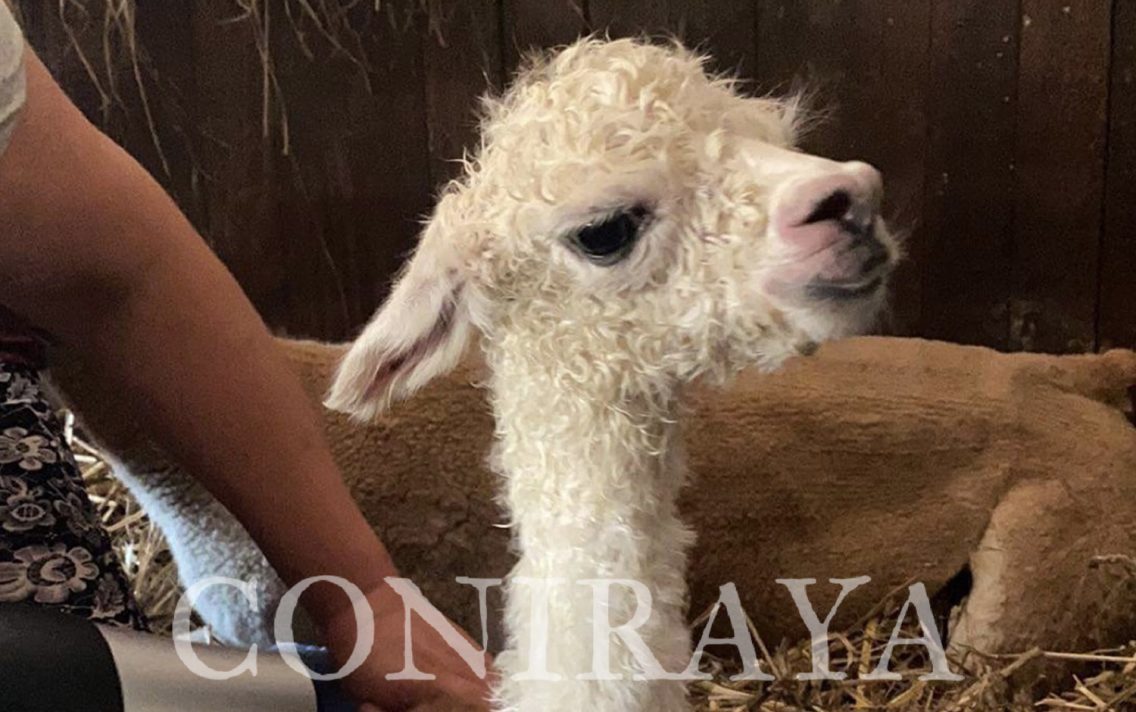It is advisable to monitor the perinatal period and deliveries using cameras. Signs of approaching delivery include enlargement of the udder, loosening of the pelvic ligaments and changes in the behaviour of females (10). In the first stage of delivery, the pregnant female approaches places where the herd defecates more often or moves away altogether. She may also show a lack of interest in eating. In this stage of delivery, which lasts 3–6 hours, the cervix relaxes and, thanks to increasingly visible contractions, the fetus rotates and lies properly in the birth canal. In this early stage of delivery, the female may also observe an increased frequency of position changes (standing up and lying down) and rubbing her head against the vulva. The pregnant female may also have a swollen and loose vulva, and in alpacas with light skin pigmentation, it may be visible that it is red.
In the second stage of labor, labor pains intensify and the amniotic sac and fetus are expelled. This stage is very dynamic and usually lasts about 20 minutes. In primiparous women, it can extend to 80 minutes. The female alternately lies down and stands up. Labors in most cases occur in a standing position. During intense contractions, the female raises her tail, the pectoral limbs of the fetus appear in the vulva, and then, after a few contractions, the head emerges (Fig. 1). Labor may stop for a moment, because the female may pause before expelling the rest of the fetus.
In the third stage of labor, which lasts about an hour, the alpaca should expel the placenta and remove the afterbirths. The average weight of the placenta is 0.6 to 1.1 kg, depending on the size of the fetus (11).
Due to the anatomical structure of the fetus (exceptionally long neck and limbs), obstructions to labor often occur. Incorrect position, location and posture of the fetus prevent the expulsion of the fetus and require assistance in labor. The most common are limb constipation and head wrapping. A large fetal mass may increase the risk of uterine torsion. Death of the fetus before delivery also increases the risk of labor difficulties (the fetus does not move into the birth canal). In most cases, repositioning can be performed if the cervix is open. Otherwise, the procedure of choice is a cesarean section.
According to available literature, oxytocin administration does not induce labor in alpacas (12). Prostaglandin 2alpha is effective in inducing labor, but its administration should be limited to cases where the female’s life is at risk, and the fetal heart rate should be monitored. Symptoms of fetal distress are an indication for caesarean section to increase the chance of survival of the newborn.
Studies have shown that plasma progesterone concentrations in pregnant alpacas decrease significantly from three days before to the day of delivery (13).
The entire original Polish article is available at the link:


